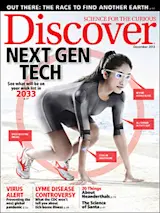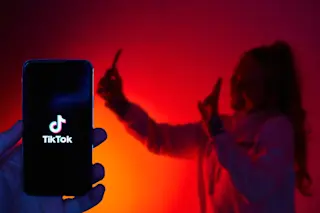In the tech and gadget field, 2033 has been a year to remember. Who can forget Prince George celebrating his 20^th birthday in July with a mesospheric circuit of Earth in SpaceX’s first consumer-targeted vehicle, the Muskie?
Or in October, when NASA officially opened its second permanent lunar base with a live BrainSync between honorary Moon President Neil deGrasse Tyson and a select group of fans who won the chance to access portions of his long-term memory through a QuantumWeb sweepstakes?
While the Muskie and the BrainSync won’t hit the mass market until well into 2034, that doesn’t mean you have to content yourself with last year’s toys. Discover tested some of the newest, shiniest stuff out there to bring you our top picks for your 2033 holiday wish list.
Choose an extinct animal, and the DADE app will send you the complete starter kit, including DNA and a tutorial ...















